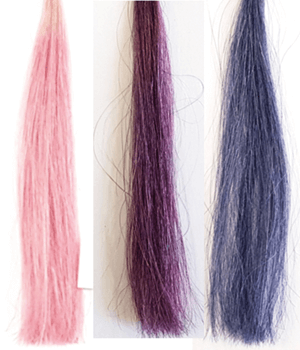Amidst consumer concerns about irritants, carcinogens and environmental impact, the search has been on for alternatives to synthetic hair dyes. Researchers from Leeds, UK, decided to look to the humble blackcurrant; specifically, the fruit waste left over from the manufacture of popular British cordial, Ribena. As blackcurrant skins contain high quantities of anthocyanins – water-soluble pigments responsible for vivid blue and purple hues in plants and flowers – they seemed a “natural” choice.

The blackcurrant skin anthocyanin was combined with aqueous solution before being applied to hair in various concentrations; for comparison, extracts were also applied using a typical hair dye formulation. The hair samples in both instances were then measured using reflectance spectrophotometry. The team discovered that the anthocyanins and hair fibers were a winning combination; not only was an intense (and comparable) color achieved, but the dye remained stable after multiple washes (1). The best bit? The UK’s consumption of blackcurrant cordial is so high that access to biodegradable raw materials is unlikely to present a problem – potentially making this a truly sustainable alternative to commercial hair colorants. So feel free to drink and be merry – for tomorrow we dye…
References
- PM Rose et al., “Application of anthocyanins from blackcurrant (ribes nigrum l.) fruit waste as renewable hair dyes”, J Agric Food Chem, 66, 6790-6798 (2018).




